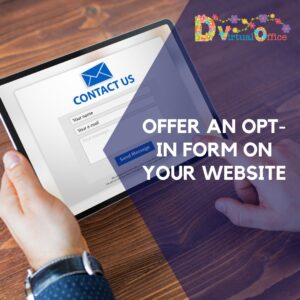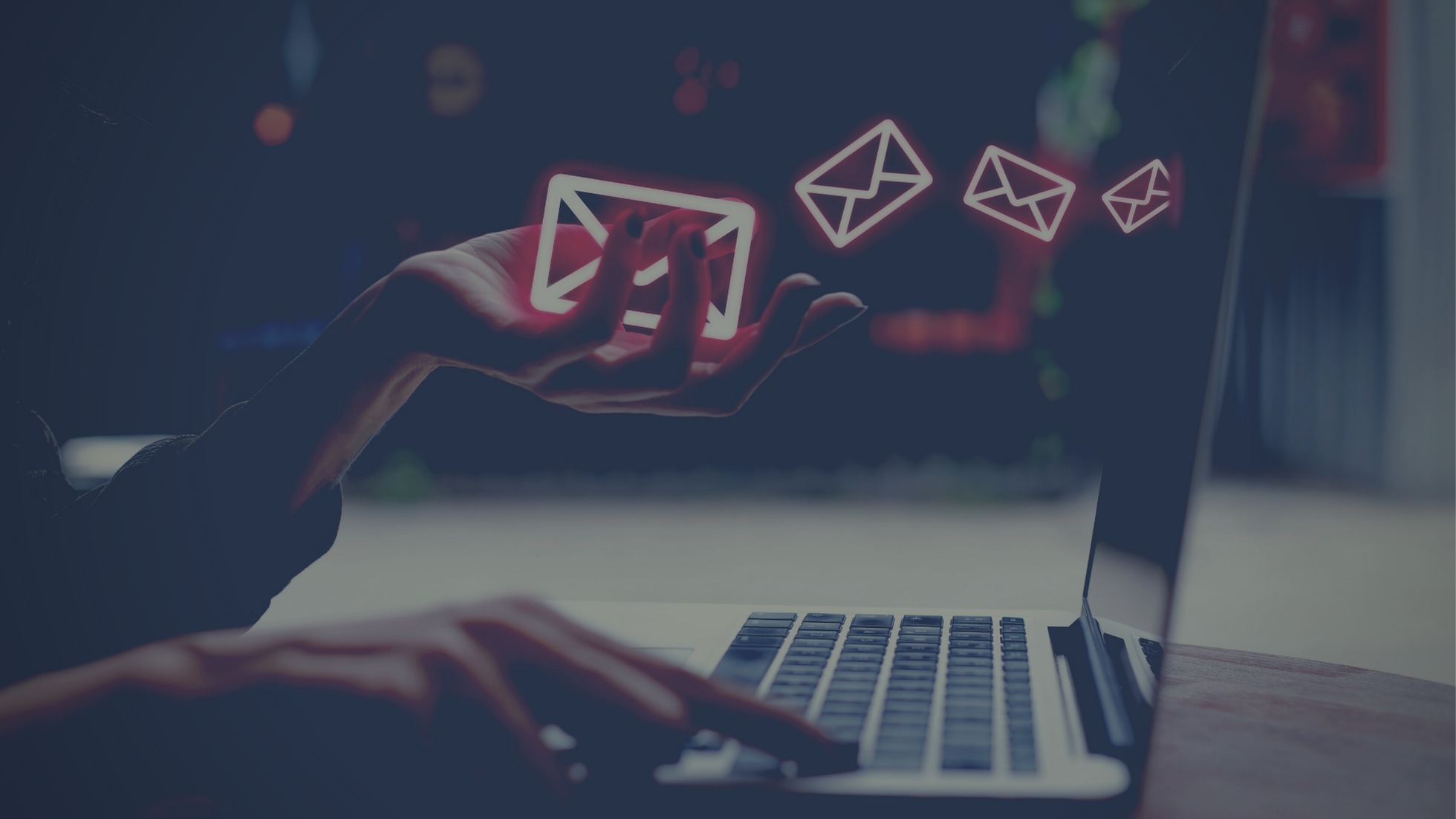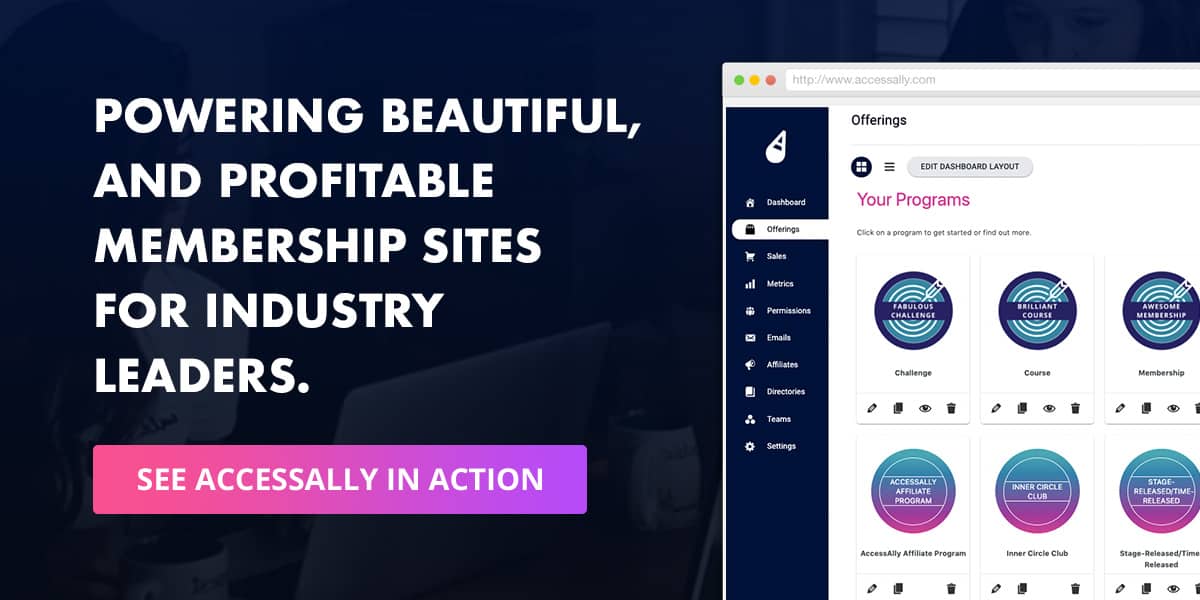How to Build an Effective Email Marketing Campaign
Email marketing has been a tried-and-true method of promoting businesses and products for years. However, with the constant evolution of technology and digital marketing strategies, creating an email list can seem overwhelming to many business owners.

But fear not, as building an effective email list is crucial to the success of your email marketing campaign. In this article, we will discuss some popular options for creating an email list and provide tips on how to make your email marketing campaign a success.
We’ll cover everything from avoiding purchased email lists to leveraging social media platforms like Facebook, Instagram, Twitter, and Pinterest to grow your list.
We’ll also share tips for creating compelling email content, segmenting your list, split-testing your emails, and analyzing your results.
Whether you’re new to email marketing or looking to improve your current campaigns, this guide will provide you with the knowledge and tools you need to create a successful email marketing campaign that drives results for your business.
Building an Effective Email List
Offer an opt-in form on your website.
 Offering an opt-in form on your website is one of the most effective ways to build an email list. This allows visitors to enter their email address and subscribe to your email list, indicating their interest in your brand and products.
Offering an opt-in form on your website is one of the most effective ways to build an email list. This allows visitors to enter their email address and subscribe to your email list, indicating their interest in your brand and products.
To make this option more enticing, you can offer a free resource, such as an eBook or a discount code, in exchange for their email address. This not only incentivizes visitors to sign up but also provides them with valuable content or a special offer that can encourage them to become customers.
Make sure to provide a clear and attractive incentive for visitors to sign up, and ensure that the opt-in form is prominently displayed on your website. This means placing it in a visible location, such as the sidebar, header, or footer, and using eye-catching design elements such as colors, fonts, and images to draw attention to it.
You can also use pop-ups or slide-ins to prompt visitors to sign up when they visit your website. However, be careful not to use intrusive or spammy tactics that can annoy or frustrate visitors.
Finally, make sure your opt-in form is user-friendly and easy to fill out, with clear instructions and minimal required fields. This can help increase the chances of visitors signing up and becoming subscribers to your email list.
Run a contest or giveaway!
Another effective way to build an email list is to run a contest or giveaway. This is a fun and engaging way to attract new subscribers and reward your current ones.
When running a contest or giveaway, it’s important to follow email marketing laws and guidelines. For example, you should clearly state the rules and terms of the contest or giveaway, including the start and end date, the prize, and any eligibility requirements.
You should also provide a way for participants to opt-in to your email list, such as by entering their email address in the contest entry form. Additionally, you should use the contest or giveaway as an opportunity to promote your brand and products.
For example, you can require participants to follow you on social media or share your contest with their friends. This can help increase your brand awareness and reach a wider audience.
Finally, make sure to follow up with all participants, whether they won or not, by sending them a thank-you email and encouraging them to continue following your brand. This can help build a positive relationship with your subscribers and keep them engaged with your brand.
Ask for Referrals through an Affiliate Program
 Asking your existing subscribers to become affiliates is a great way to expand your email list and reach a wider audience. Since your subscribers are already interested in your brand and products, they are likely to know others who would also be interested.
Asking your existing subscribers to become affiliates is a great way to expand your email list and reach a wider audience. Since your subscribers are already interested in your brand and products, they are likely to know others who would also be interested.
To encourage referrals, you can offer an incentive, such as a commission or a bonus, for every referral that signs up for your email list through the affiliate link provided by your existing subscribers. This not only motivates your current subscribers to refer their friends and family but also provides an extra incentive for the new subscribers to sign up.
To make the referral process as easy as possible, provide clear instructions and a user-friendly referral form or link that your subscribers can share with their network. You can also use email marketing campaigns to promote your affiliate program and encourage subscribers to participate.
Finally, make sure to follow up with both the affiliate and the referred subscriber, thanking them for their participation and providing them with valuable content or offers that can keep them engaged with your brand. By leveraging the power of affiliate referrals, you can grow your email list with new subscribers who are likely to be interested in your products or services.
Leverage Social Media
Social media is a powerful tool for building your email list and reaching a wider audience.
 With platforms such as Facebook, Instagram, Twitter, and Pinterest, you can create social media posts that encourage your followers to subscribe to your email list. Make sure to provide a clear incentive for subscribing, such as exclusive content or discounts.
With platforms such as Facebook, Instagram, Twitter, and Pinterest, you can create social media posts that encourage your followers to subscribe to your email list. Make sure to provide a clear incentive for subscribing, such as exclusive content or discounts.
You can also include a link to your opt-in form in your social media profiles, making it easy for your followers to sign up.
Paid social media advertising is another effective way to grow your email list. On platforms such as Facebook, Instagram, Twitter, and Pinterest, you can use targeted ads to reach specific audiences and encourage them to sign up for your email list. These ads can be targeted based on factors such as age, location, interests, and behavior, ensuring that your message is seen by those who are most likely to be interested in your products or services.
When creating social media posts or ads, make sure to use attention-grabbing visuals and persuasive copy to encourage your followers to take action. You can also use hashtags to increase the visibility of your posts and reach new audiences.
Finally, it’s important to track the performance of your social media campaigns to see which posts or ads are generating the most email sign-ups. This can help you refine your strategy and optimize your campaigns for better results.
By using social media, including Facebook, Instagram, Twitter, and Pinterest, and paid social media advertising, you can leverage these platforms to grow your email list and drive conversions for your business.
Avoid Purchasing Email Lists
Protect Your Sender Reputation and Improve Email Deliverability.
While it may seem tempting to purchase an email list to quickly build your subscriber base, it’s important to avoid this practice as it can harm your sender reputation and negatively impact your email deliverability.
Most purchased email lists are filled with inactive or fake email addresses, which can lead to high bounce rates and low engagement rates. In turn, this can damage your sender reputation and cause your emails to be marked as spam, making it difficult for your emails to reach your intended audience.
Moreover, with the rise of data privacy regulations such as the General Data Protection Regulation (GDPR) and the California Consumer Privacy Act (CCPA), it’s more important than ever to obtain consent from your subscribers before adding them to your email list.
Purchased email lists often contain email addresses that have not given their consent to receive marketing emails from your business, which can result in legal consequences and reputational damage.
Instead of purchasing email lists, focus on building a targeted email list of interested subscribers who have given their explicit consent to receive marketing emails from your business. You can do this by offering valuable content or exclusive discounts in exchange for email sign-ups on your website or social media channels.
You can also encourage current subscribers to share your emails with their friends and family, or to refer others to your email list. By building a targeted email list in a responsible and ethical manner, you can protect your sender reputation, improve your email deliverability, and achieve better engagement rates and conversion rates.
Creating Compelling Email Content to Boost Engagement and Drive Conversions
Once you have a targeted email list, it’s important to create compelling email content that will engage your subscribers and persuade them to take action. With the rise of inbox overload and increasing competition for subscribers’ attention, it’s more important than ever to create emails that stand out and provide value to your audience. Here are some tips for creating effective email content:
Use a Catchy Subject Line that Avoids Spam Triggers:
Your subject line is the first thing your subscribers will see, so it’s important to make it attention-grabbing and compelling. Use action words and avoid using words that are commonly associated with spam, such as “free” or “limited time offer.”
Additionally, use personalization in your subject line, such as including the subscriber’s name or location, to increase open rates. With the growing use of mobile devices for email, it’s also important to keep your subject lines short and to the point.
Provide Valuable and Relevant Content:
Your email content should provide value to your subscribers. This can include helpful tips, industry news, or exclusive promotions.
Make sure to keep your content relevant and useful to your subscribers, and avoid using too much sales language. It’s also important to segment your email list based on subscriber interests and behavior, so you can deliver more personalized and targeted content that resonates with your audience.
Include a Clear Call-to-Action (CTA):
 Every email you send should have a clear call-to-action that encourages your subscribers to take action. This can be anything from making a purchase to visiting your website or following you on social media.
Every email you send should have a clear call-to-action that encourages your subscribers to take action. This can be anything from making a purchase to visiting your website or following you on social media.
Make sure your CTA is clear, concise, and easy to follow. Use action-oriented language, such as “Shop Now” or “Learn More,” to encourage your subscribers to take the desired action. You can also use urgency and scarcity tactics, such as limited-time offers or exclusive deals, to create a sense of urgency and drive conversions.
Optimize for Mobile:
With the growing use of mobile devices for email, it’s important to optimize your email content for mobile viewing.
This includes using responsive design, which automatically adjusts the layout of your email to fit the screen size of the device, and using clear and legible fonts that are easy to read on smaller screens.
You should also make sure your email content loads quickly and is easy to navigate with a single thumb.
By following these tips and creating compelling email content that engages your subscribers and drives conversions, you can achieve better results from your email marketing campaigns and grow your business.
Segmenting Your Email List for Better Targeting and Personalization
Segmenting your email list is a crucial step in email marketing that allows you to send targeted and personalized emails to specific groups of subscribers.
By dividing your email list into smaller groups based on characteristics such as demographics, interests, or past behavior, you can deliver more relevant and valuable content to each group, increasing engagement and conversion rates. Here are some tips for effective email list segmentation:
Start with Basic Segmentation: You can begin by segmenting your email list based on basic demographic information such as age, gender, or location. This can help you send more targeted messages to specific groups of subscribers and improve engagement.
Use Behavioral Data for Advanced Segmentation:
To take your segmentation to the next level, you can use behavioral data such as past purchase history, website browsing behavior, or email engagement to create more targeted and personalized campaigns.
For example, you can send a different email to subscribers who have abandoned their cart compared to those who have made a purchase recently.
Use Automation to Streamline Segmentation: Email marketing automation platforms such as Keap or MailerLite allow you to create automated campaigns that use subscriber data to trigger personalized emails based on specific actions or behaviors. This can help you deliver more timely and relevant messages to your subscribers without manual effort.
Test and Refine Your Segmentation Strategy:
It’s important to test and refine your segmentation strategy regularly to ensure you’re delivering the right message to the right audience. You can use A/B testing to compare the performance of different email messages and segmentation strategies and adjust your approach accordingly.
By segmenting your email list and delivering more targeted and personalized content, you can improve engagement, conversion rates, and overall ROI from your email marketing campaigns. Platforms like Keap and MailerLite provide powerful tools for segmenting and targeting your email list effectively, so be sure to explore these options and find the approach that works best for your business.
Testing and Analyzing Your Emails for Improved Results
 Testing and analyzing your emails is a critical step in optimizing your email marketing campaigns for better engagement, conversion rates, and overall ROI. By sending variations of your emails to small groups of subscribers and analyzing the results, you can determine which elements are most effective and make data-driven decisions to improve your campaigns.
Testing and analyzing your emails is a critical step in optimizing your email marketing campaigns for better engagement, conversion rates, and overall ROI. By sending variations of your emails to small groups of subscribers and analyzing the results, you can determine which elements are most effective and make data-driven decisions to improve your campaigns.
Here are some tips for effective email testing and analysis:
Start with A/B Testing:
A/B testing, also known as split-testing, involves sending two variations of your email to small groups of subscribers and comparing the results to determine which version performs better.
You can test different elements such as subject lines, CTAs, images, and content to see what works best for your audience. Programs like Keap offer built-in A/B testing features. or you can use third-party tools like ConvertKit to run tests.
Test Landing Pages:
In addition to testing your email content, it’s important to test your landing pages to ensure they’re optimized for conversion. Programs like Divi or Leadpages offer split-testing features to test different versions of your landing pages and determine which one generates more leads or sales.
Analyze Your Results:
Once you’ve run your tests, it’s important to analyze your results to gain insights and make informed decisions for future campaigns. Look for patterns in the data, such as which subject lines generate the highest open rates, or which CTAs lead to the most clicks. Programs like Google Analytics or Hotjar can help you track and analyze your email campaign metrics.
Continuously Improve Your Strategy:
Testing and analyzing your emails should be an ongoing process that helps you improve your email marketing strategy over time. Use the insights gained from your tests to refine your approach, and continue to test new elements and strategies to see what works best for your audience.
By testing and analyzing your emails, you can improve the effectiveness of your email marketing campaigns and generate better results for your business. Whether you’re using Keap, MailChimp, or another email marketing platform, be sure to take advantage of the built-in split-testing features and use third-party tools as needed to optimize your campaigns.
Conclusion
Email marketing is a powerful tool for businesses looking to engage their audience, build brand awareness, and drive conversions.
Building an effective email distribution list is an essential part of any successful email marketing campaign.
You can grow a targeted list of interested subscribers by using strategies such as offering opt-in forms on your website, asking for referrals, and leveraging social media platforms like Facebook, Instagram, Twitter, and Pinterest.
Additionally, segmenting your email list, testing and analyzing your emails, and using email marketing platforms like Keap and MailerLite can help you create compelling email content that resonates with your audience and drives results.
It’s important to remember to avoid purchasing email lists, as they can damage your sender reputation and result in your emails being marked as spam. Instead, focus on building a list of subscribers who are genuinely interested in your products and services.
By following these tips and staying up to date with email marketing laws, guidelines, and industry trends and best practices, you can create an effective email marketing campaign that drives results for your business. Whether you’re a small business owner or a marketing professional, email marketing can help you connect with your audience and achieve your business goals.
How to Build an Effective Email Marketing Campaign









